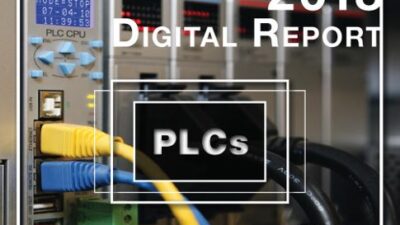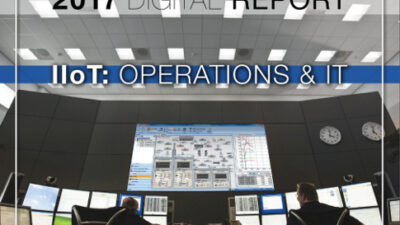| February 10, 2006 |
| Highlights | Sponsored by ABB |
| Integrating serial devices into a network infrastructure offers distinct advantages for businesses that want to centralize their operations, overcome the distance limitations of standard serial communications, and lower costs associated with hands-on administration of these devices. However, integrating serial communications into a network is challenging. |
| Data networks ease communications, lower costs
Prior to the advent of widespread networking, devices communicated using a standard serial RS-232 or RS-485 interface. Despite the many advancements of the computer industry, serial communications remain well established, with a large number of off-the-shelf and inexpensive hardware devices and software applications that continue to be designed without networking in mind. Serial communication was designed to provide a direct connection between two devices using a point-to-point connection that is limited in cable length. It was never designed for long-distance communications over a network, to be routed, or to go over the Internet. Similarly, Ethernet is not capable of directly transmitting serial data from one device to another. The challenges of enabling serial-Ethernet communications go well beyond the obvious differences in the physical and electrical interfaces. They extend to the protocols being communicated over these interfaces. A simple example is an American trying to talk to someone in France. There are several ways that you can connect to someone in France (telephone, e-mail and fax machine) and these connections are the equivalent of RS-232, RS-485 and Ethernet. But just because you can call (connect with) someone in France does not mean that you can communicate. If the American does not speak French or the French person does not speak English, there may be a connection, but no real communication. The language that serial devices speak is more commonly know as a “protocol.” So it takes both a connection and a protocol to communicate successfully. Overcoming challenges Initially, the job of the device server may seem to be a straightforward and simple process of connecting serial and Ethernet interfaces. Dig a little deeper, however, and you’ll find that the device server’s job does not end at the serial-Ethernet interface, but includes the transporting of serial data across the Ethernet network—a task much broader and more complex than merely converting data between disparate interfaces. To understand this complexity, it’s important to realize that TCP/IP is a suite of transparent mechanisms. They methodically define how information moves from sender to destination. The following steps summarize the procedure for transporting data across a TCP/IP network: data-gram and transmits it as a frame over a specific network (such as Ethernet). The steps are basic, but there is a particular challenge when they are applied to serial data because serial data was never meant to be divided. It was designed to be transmitted as a continuous data stream going directly from one device to another. The intricacies associated with transporting serial data over a TCP/IP network become even more daunting when you consider that different devices have their own requirements for receiving data. For example: In all three cases, if these expectations are not met, the data may be rendered unintelligible or even discarded by the destination device. Device servers take the complexity out of transporting serial data over Ethernet. Without additional software, configuration or customization, they execute the steps shown above to ensure that the serial data can be transported across the TCP/IP network and reassembled into meaningful information once it reaches its destination. Serial tunneling extending the serial connection between a PC and a POS device Strictly speaking, any technology that accomplishes this can be called wireless networking. The current meaning of the buzzword, however, generally refers to wireless LANs (WLANs). This technology, fueled by the emergence of standards, such as IEEE 802.11, has produced a number of affordable wireless solutions that are growing in popularity with business, as well as sophisticated applications where network wiring is impossible, such as in medical, building automation, warehousing, or POS (point of service) handheld equipment. There are many advantages to cutting the cord and network-enabling your equipment wirelessly. A wireless network is perfect for places where it is impractical or inconvenient to connect devices with traditional Ethernet wiring. Even if your facility can accommodate cabling, wireless saves the cost of deploying cables in the first place. Wireless is a great way to get a network connection to an infrequently used location. It also provides a whole new level of flexibility and mobility by allowing users of notebooks and PDAs to remain connected as they move untethered from one location to an-other. Wireless applications are particularly attractive to industries where certain functions are difficult to perform because of large areas, harsh operating conditions, or other restrictions. From automotive to warehouse environments, the need to attach essential devices (new or legacy) such as PLCs, CNC/DNC equipment, process and quality control machinery, pump controllers, barcode operator displays, scales and weighing stations, printers, machine vision systems, and many other types of manufacturing equipment is common. Wireless networks offer unique and flexible capabilities beyond the typical wired networks. Mobility, access to remote areas and easy deployment are benefits of wireless device network. Real-world example When reading this information, the opportunity for error increased as the signal passed through each separate device, with measurements so small that any degree of error can be detrimental. Going wireless enabled this company to measure contaminants directly at the source of the water sample. A device server communicates directly with the HMI, reducing the risk for errors and providing information on the process in real time. |


